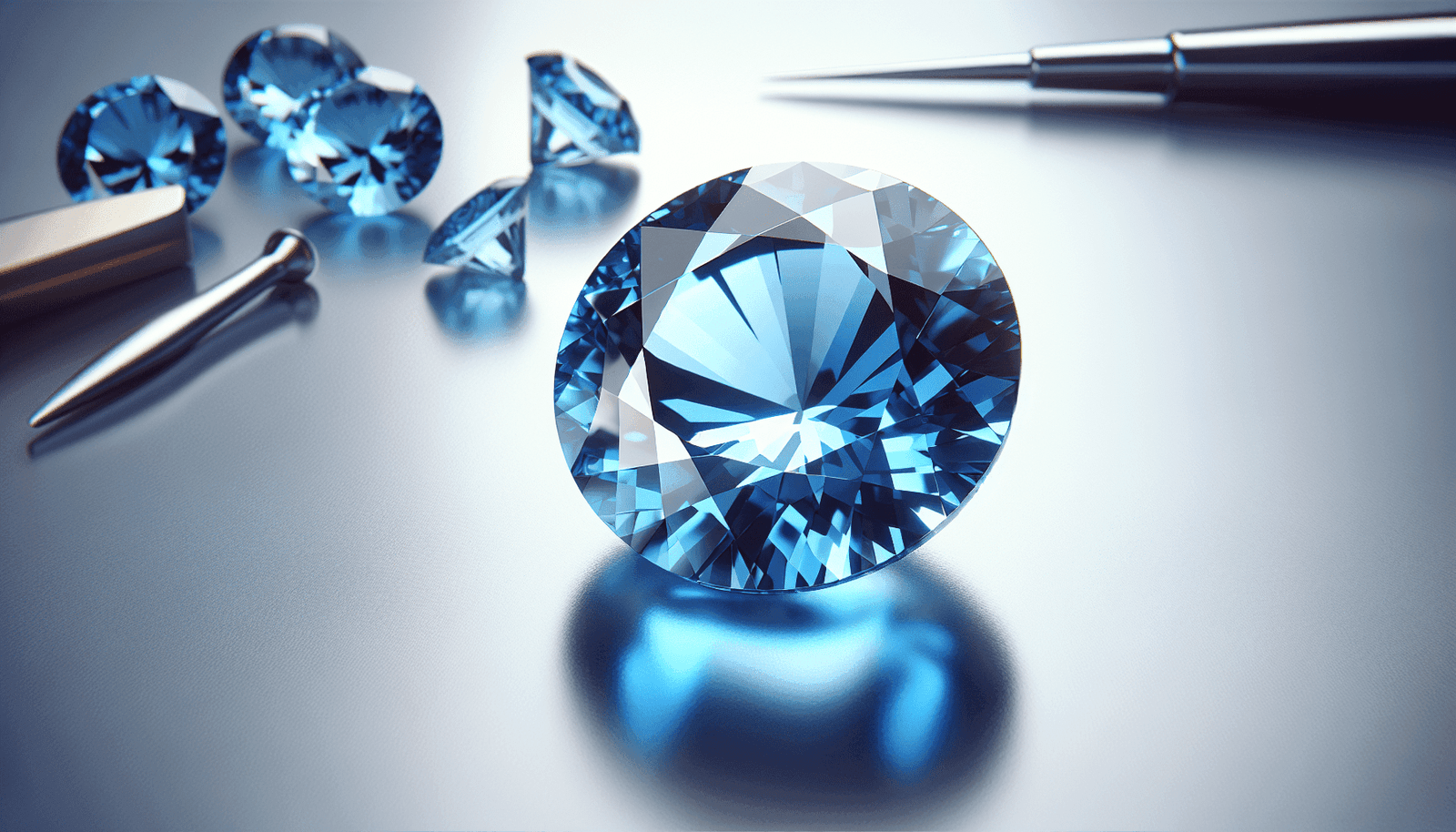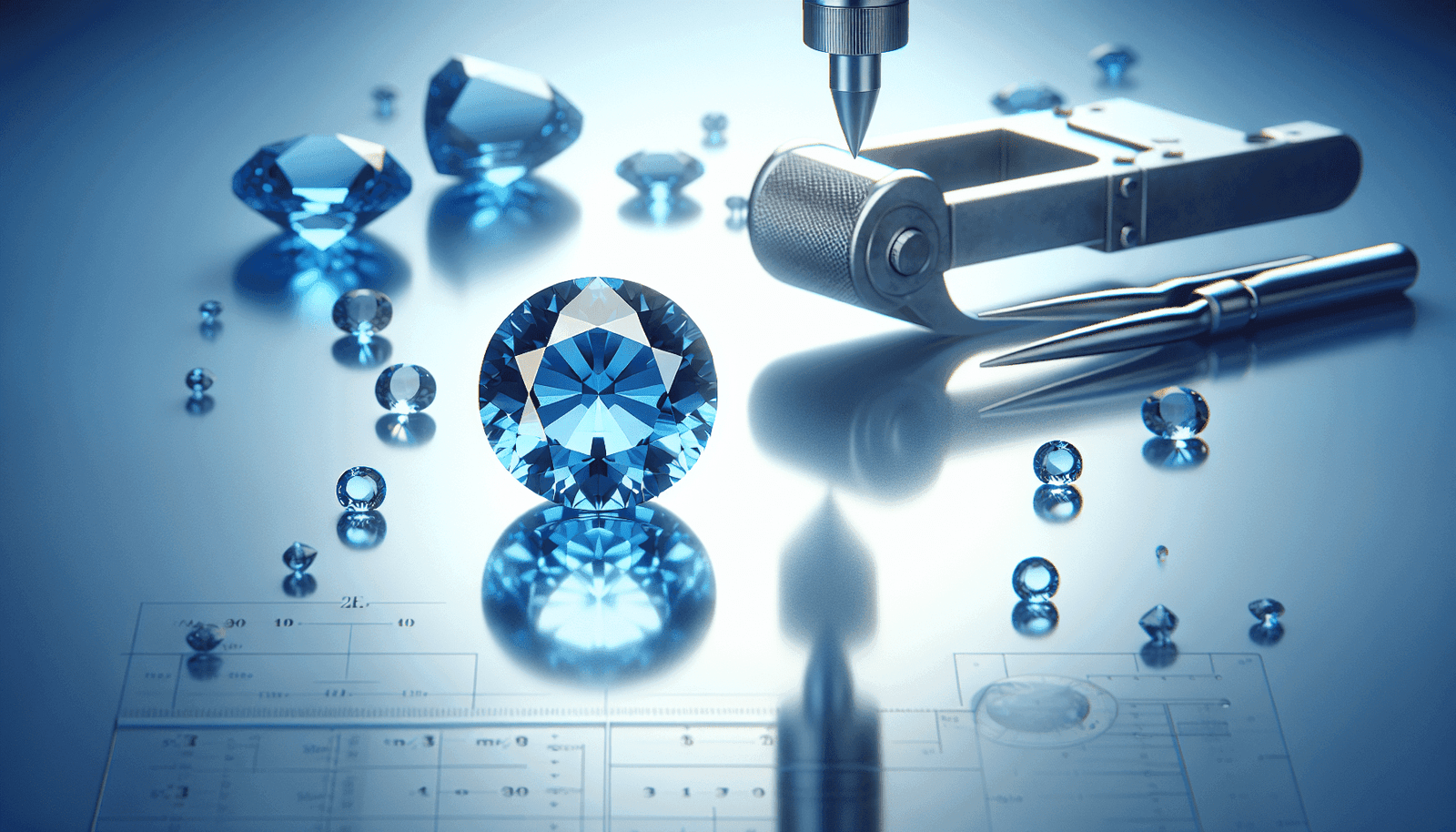How Do You Know If A Sapphire Is Valuable?
How do you know if a sapphire is valuable? It’s one of those questions that feels almost existential when you’re standing at a jeweler’s counter, palms sweaty, filled with desires that probably cost more than your first car. Sapphires have long captured the human imagination with their dazzling range of hues and sparkling clarity. Whether you’re shopping for an engagement ring, a gift, or just treating yourself, knowing what makes a sapphire valuable is crucial. This guide will provide you with all the information you need to make an informed decision.

The Basics of Sapphire
Before we dissect the intriguing minutiae, let’s lay down the basics. Sapphires are members of the corundum family and are highly prized for their beauty, durability, and rarity. While blue sapphires are the most well-known, they can actually come in almost every color of the rainbow.
Corundum: The Sapphire Family
Sapphires and rubies are both forms of corundum, but they owe their different colors to impurities. For example, blue sapphires get their color from trace amounts of iron and titanium. The presence of these and other elements determines not only the color but also the overall quality of the sapphire.
Hardness and Durability
Sapphires are incredibly hard, ranking 9 on the Mohs scale of hardness. This makes them second only to diamonds in terms of durability. Their hardness is one of the reasons why sapphires are an excellent choice for everyday jewelry.
Factors Affecting Sapphire Value
To truly understand how sapphires are valued, you must consider several factors. Let’s break down each one in detail to give you a thorough understanding.
Color
Color is arguably the most critical factor affecting sapphire value. The general rule of thumb is the more vivid and saturated the color, the more valuable the sapphire.
Hue, Tone, and Saturation
- Hue: The basic color of the sapphire. Blue is the most popular hue, but sapphires can be pink, yellow, green, and even black.
- Tone: This refers to the darkness or lightness of the hue. A sapphire that is too dark or too light can lose value.
- Saturation: This is the intensity of the hue. Highly saturated sapphires with pure, intense colors are the most valuable.
Table of Sapphire Colors and Their Popularity
| Color | Popularity (%) | Comments |
|---|---|---|
| Blue | 70% | The classic and most sought-after color. |
| Pink | 10% | Increasing in popularity for engagement rings. |
| Yellow | 8% | Bright and cheerful, often less expensive. |
| Green | 5% | Rare and unique. |
| Black | 2% | Mysterious and less commonly seen in jewelry. |
| Other Colors | 5% | Includes orange, purple, and multi-colored. |
Clarity
Clarity deals with the presence of internal or surface imperfections, called inclusions and blemishes, respectively. Unlike diamonds, sapphires are generally expected to have some inclusions; fully flawless sapphires are almost unheard of and, hence, extremely valuable.
Common Inclusions
- Needles: Thin, long inclusions usually made of rutile.
- Crystals: Small mineral crystals inside the sapphire.
- Feathers: Small crack-like inclusions.
- Fingernail Inclusions: Appear like crescent moons or boomerangs.
Impact on Value
If inclusions are too noticeable or affect the overall transparency of the sapphire, the value decreases. However, minor inclusions that are not visible to the naked eye usually don’t significantly impact the gemstone’s value.
Cut
The cut of a sapphire refers to how it has been shaped and faceted from its raw form. It is crucial for maximizing the stone’s brilliance and depth of color.
Quality of Cut
- Precision: A well-cut sapphire has precise facets that allow light to enter and reflect properly.
- Symmetry: A symmetrical cut ensures the gem has a balanced appearance.
- Proportions: Proper proportions in the cutting process can highly enhance color and clarity.
Mistakes in cutting can reduce the sapphire’s overall appeal and, consequently, its value. A poorly cut sapphire might look dull or might not showcase its color to the fullest extent.
Carat Weight
Carat weight is a unit of measurement for the size of the sapphire. Larger sapphires are rare and, thus, generally more valuable, but don’t let size deceive you. A smaller sapphire of exceptional quality can be more valuable than a larger, mediocre one.
Weight and Value
Much like diamonds, the value of sapphires increases exponentially with carat weight. However, you must balance other factors like color, cut, and clarity. A heavy sapphire that lacks vibrant color or has many inclusions can be less valuable than a smaller, high-quality stone.
Origin
The origin of a sapphire can also significantly influence its value.
Regions of High-Value Sapphires
- Kashmir: Sapphires from this region are known for their velvety blue color and intense saturation.
- Burma (Myanmar): Famous for their unique blue hue and exceptional quality.
- Sri Lanka (Ceylon): Known for producing a variety of colors, particularly bright blue and yellow sapphires.
- Madagascar: An emerging source known for high-quality stones.
Table of Sapphire Origins and Their Impact on Value
| Origin | Impact on Value | Comments |
|---|---|---|
| Kashmir | High | Rare and highly sought-after. |
| Burma | High | Deep blue with fewer inclusions. |
| Sri Lanka | Medium to High | Known for a range of colors and good quality. |
| Madagascar | Medium | Increasingly popular, good value for money. |
| Other Regions | Variable | Quality can vary widely. |

Treatments and Enhancements
Not all sapphires you come across are in their “natural” state. Treatments and enhancements improve the appearance of a gem but can also impact its value.
Heat Treatment
The most common treatment is heat treatment, which enhances the color and clarity of the sapphire. While this is generally accepted in the gemstone industry, it does lower the value slightly compared to completely untreated sapphires.
Diffusion Treatment
Another method involves adding elements during the heating process. For example, beryllium diffusion can create vibrant orange sapphires. However, sapphires treated this way have a much lower value and should always be disclosed.
Surface Diffusion
This involves adding color to the outer layers of the sapphire. The enhancement is not deep and can wear off over time, significantly lowering the stone’s value.
Table of Common Treatments and Their Impacts
| Treatment Type | Impact on Value | Comments |
|---|---|---|
| Heat Treatment | Moderate | Widely accepted, slight reduction in value. |
| Diffusion | High | Significant reduction, should be disclosed. |
| Surface Diffusion | Very High | Greatly reduces value, color can wear off. |
| Other Treatments | Variable | Must be disclosed, reduces value accordingly. |
Synthetics and Imitations
In the 21st century, technology offers synthetic sapphires that are chemically identical to natural ones. While synthetic sapphires have their place in jewelry, they are much less valuable than natural stones.
Synthetic Sapphires
Created in a lab, synthetic sapphires offer the same hardness, brilliance, and color as natural sapphires but at a fraction of the price. While they are a fantastic option for budget-conscious buyers, they don’t carry the same value as natural sapphires.
Imitations
Imitations like glass or cubic zirconia are even less valuable, often used in costume jewelry. These don’t have the same properties as natural or synthetic sapphires and should not be confused with the real deal.
Table of Sapphire Alternatives
| Type | Value | Comments |
|---|---|---|
| Natural Sapphires | High | Depends on color, clarity, cut, and carat weight. |
| Synthetic Sapphires | Moderate | Less valuable, but identical to natural sapphires. |
| Imitations | Low | Suitable for costume jewelry, not considered valuable. |

Certification and Authentication
No discussion about valuable sapphires would be complete without touching on certification. Genuine certification from reputable labs boosts both the trust and value of a sapphire.
Reputable Gem Labs
Organizations like the Gemological Institute of America (GIA) and the International Gemological Institute (IGI) provide detailed certificates that confirm the authenticity and quality of a sapphire.
What to Look for in a Certificate
A good certificate should detail the following:
- Color: Hue, tone, and saturation.
- Clarity: Presence of inclusions.
- Cut: Quality of the faceting.
- Carat Weight: Exact weight of the sapphire.
- Origin: If determined.
- Treatments: Any enhancements the sapphire has undergone.
Market Trends and Investment Value
Lastly, consider the broader market trends. Sapphires, like most gemstones, are influenced by market demand and trends, which can affect their value.
Current Market Trends
Blue sapphires have remained consistently popular, but unique colors like padparadscha (a mix of pink and orange) are gaining traction. Understanding these trends can help you make a more informed purchase.
Long-term Value
Sapphires can be a good investment, but their value can fluctuate based on trends, availability, and advancements in synthetic gemstone production. While historically stable, it’s crucial to buy sapphires because you love them, rather than solely seeing them as an investment.
Conclusion
So, how do you know if a sapphire is valuable? By considering factors like color, clarity, cut, carat weight, treatments, origin, and current market trends, you can make an informed decision. Remember that certifications from reputable labs add another layer of trust and assurance. Whether you’re splurging on a high-end piece or looking for something budget-friendly, this guide should arm you with the knowledge to pick a truly valuable sapphire.



